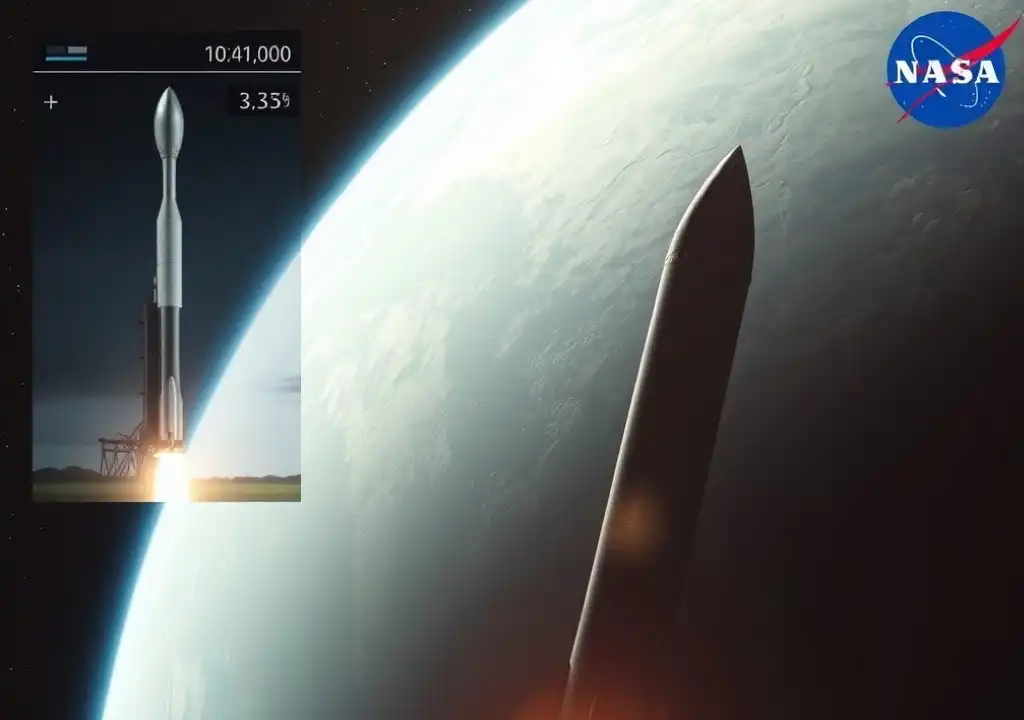Despite facing setbacks, SpaceX is optimistic about its progress after the third test flight of the Starship rocket, a crucial element of NASA’s upcoming plans. While the rocket was lost during re-entry into Earth’s atmosphere, it achieved significant milestones during its flight.
SpaceX’s latest Starship test flight was the third conducted with the rocket, which plays a key role in NASA’s mission to send astronauts to the Moon. SpaceX, founded by Elon Musk, livestreamed the experiment, highlighting that the rocket traveled farther and faster than in previous tests.
However, the rocket lost communication with SpaceX engineers as it descended toward Earth. The livestream cut off, with the last image showing the heat shield flaring up from atmospheric friction. SpaceX later confirmed that the rocket did not survive its re-entry and was expected to splash down in the Indian Ocean. Following the failure, the U.S. Federal Aviation Administration (FAA) announced an investigation, which is standard protocol for failed space flights.
Although Starship is still a prototype, its development is critical to NASA’s future moon missions and Musk’s vision for human space exploration. NASA Administrator Bill Nelson, via the social media platform X, praised the test as a “successful flight,” underscoring the progress made for NASA’s Artemis missions to the Moon. Musk also expressed excitement, stating that “Starship will take humanity to Mars.”
Advancing Rocket Technology
Starship is still in its testing phase but represents a major leap forward in rocket technology, being the largest and most powerful of its kind. Its Super Heavy booster produces almost twice the thrust of NASA’s Space Launch System, the world’s second most powerful rocket. When fully assembled, Starship stands at an impressive 121 meters (397 feet) tall.
The first two tests of the Starship rocket were marked by explosive failures, with the first test in April 2023 ending in an explosion shortly after launch due to issues with separating the booster and second-stage engine. The second test in November saw the booster separate successfully, but the rocket exploded over the ocean. SpaceX emphasized that these early tests were not expected to succeed and were part of the iterative process to refine the design.
Key Milestones Achieved
Despite the rocket’s failure to complete its flight, Thursday’s test represented significant progress for SpaceX. Unlike the previous two tests, which ended within minutes of takeoff, this test saw the Starship complete most of its hour-long flight. SpaceX reported that the rocket successfully opened and closed its payload door, demonstrating its ability to carry satellites and cargo into space.
The rocket reached a maximum speed of over 26,000 kilometers per hour (16,000 miles per hour) and an altitude of more than 200 kilometers (125 miles), before beginning its descent. High-definition footage from onboard cameras showed the rocket firing its engines in space with the Earth’s curvature visible in the background. Communication with the rocket was lost when it was 65 kilometers (40 miles) above the ground, and the vessel was ultimately declared “lost” before it could splash down.
Trial-and-Error Approach
SpaceX’s testing strategy involves real-world trials rather than lab-based simulations, which has drawn some criticism. Environmental groups have raised concerns about the potential damage from the rocket’s fiery launches and falling debris, particularly near sensitive ecosystems at Starship’s test sites. In May, groups such as the Center for Biological Diversity and the Carrizo/Comecrudo Tribe filed a lawsuit against the FAA, claiming the agency did not adequately assess the environmental impact of SpaceX’s tests.
Despite these concerns, SpaceX has continued its testing program, which has positioned the company as a leader in the emerging spaceflight market. NASA currently relies on SpaceX’s Falcon 9 rockets to send cargo into space, and the company’s Dragon Freedom capsule is used to transport astronauts to the International Space Station.
As SpaceX works towards perfecting the Starship, the company faces the pressure of preparing the rocket for NASA’s planned missions to the Moon, which could involve Starship as a lunar lander in 2026. In a nod to the increasing global competition in space exploration, China has set its sights on landing astronauts on the Moon by 2030.

